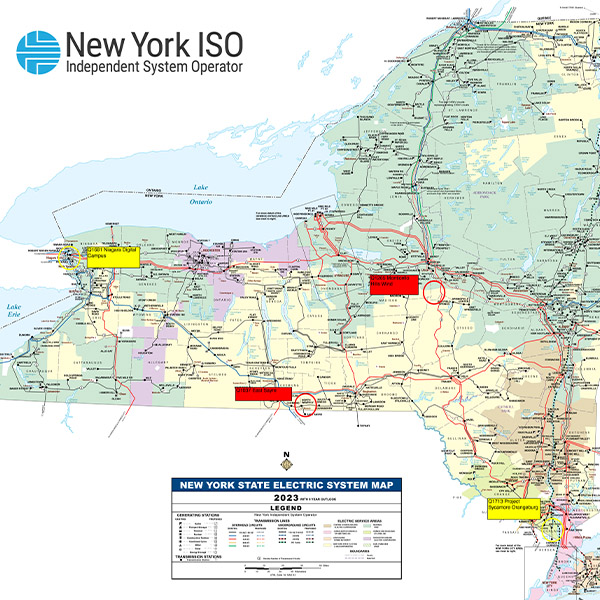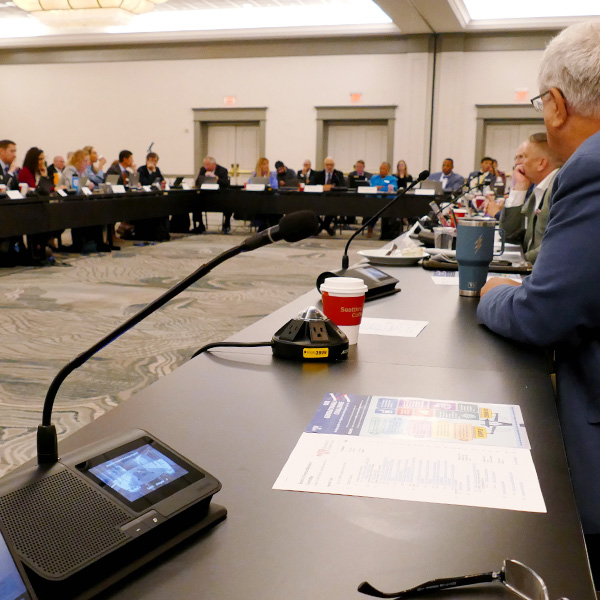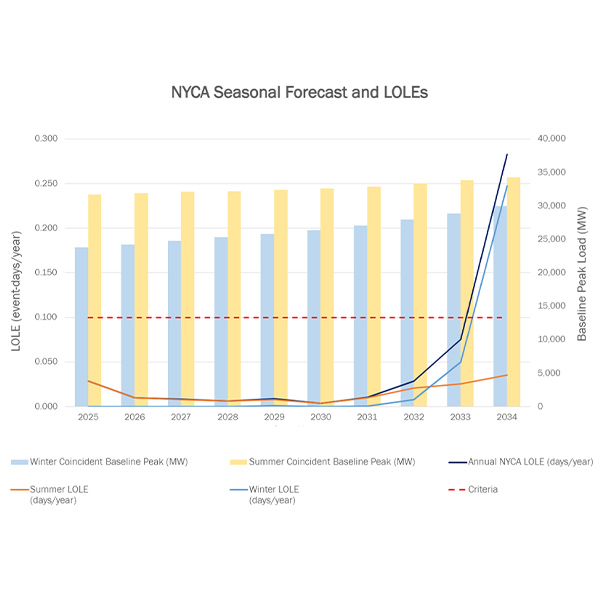loss of load expectation (LOLE)
Four environmental nonprofits insist MISO’s recently approved capacity accreditation is incomplete unless the RTO details how it will conduct its loss of load modeling the new approach relies upon.
FERC authorized MISO’s move to a capacity accreditation method that blends probabilistic availability with historical unit performance.
FERC accepted a second compliance filing from SPP outlining its process for determining its planning reserve margin with an order that found the RTO’s response met the commission’s directives.
NYISO released the first draft of its 2024 Reliability Needs Assessment showing a capacity deficiency in New York City beginning in 2033 and proposing to declare a reliability need for its zone.
NYISO made significant updates to its assumptions as part of its final Reliability Needs Assessment, which now shows no concern of a capacity deficiency and a loss-of-load expectation of less than 0.1 in 2034.
MISO is questioning whether its one-day-in-10-years loss of load standard remains the best method for establishing resource adequacy, and state regulators want in on potential decisions.
Assembly Bill 2368 would require the California Public Utilities Commission to adopt a 1-in-10 loss of load expectation — or a similarly robust planning standard — when setting resource adequacy requirements.
NYISO's update to its draft Reliability Needs Assessment still shows an expected capacity shortfall by 2034, though it is slightly less than what was initially presented in July.
SPP directors and regulators have approved the grid operator’s first winter planning reserve margin, endorsing a base PRM that is 3 percentage points higher than many of its utilities wanted.
New York will be short 1 GW of resources by 2034, driven by increased demand, large load growth and lack of natural gas, according to the preliminary results of NYISO's biennial Reliability Needs Assessment.
Want more? Advanced Search









